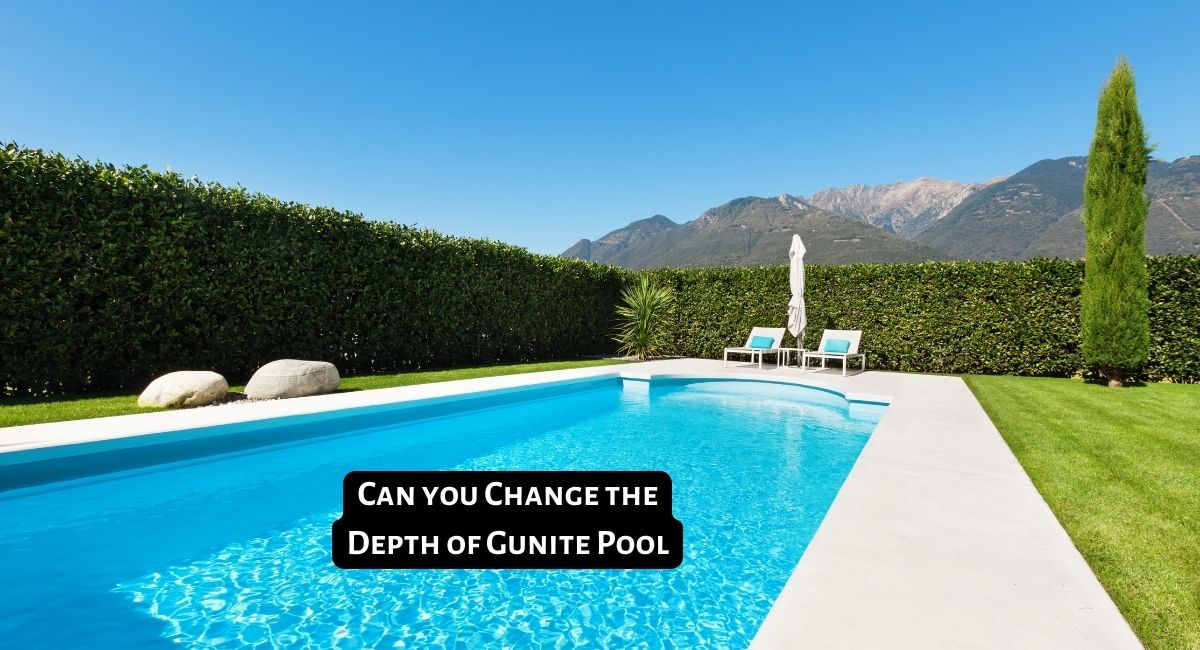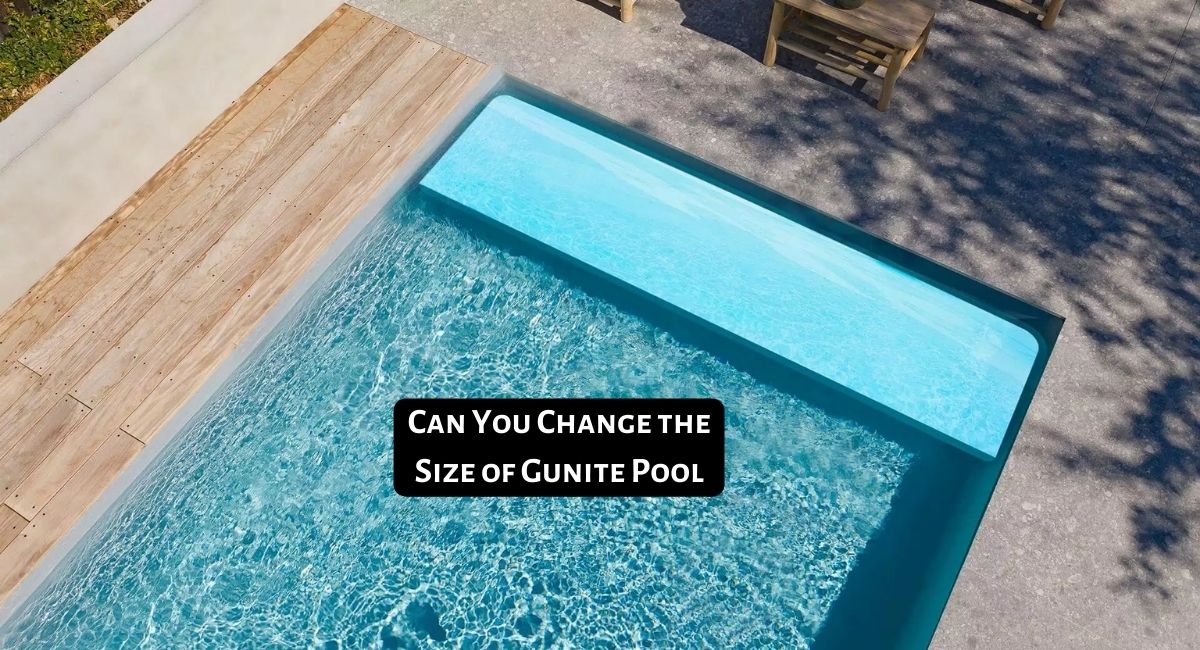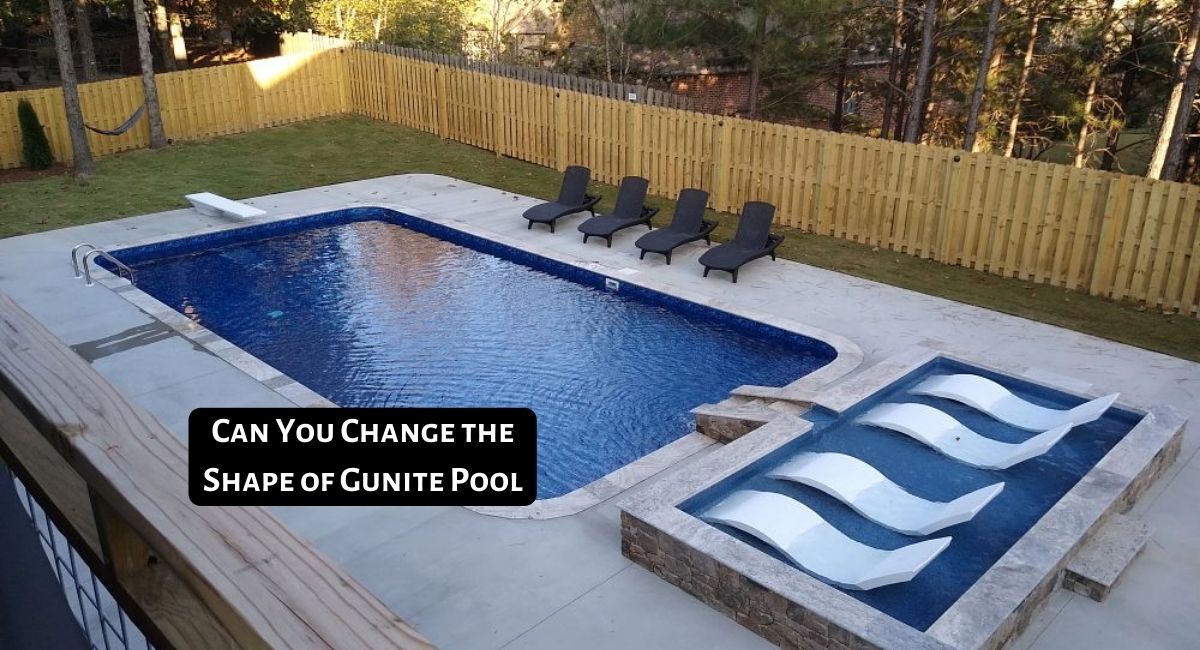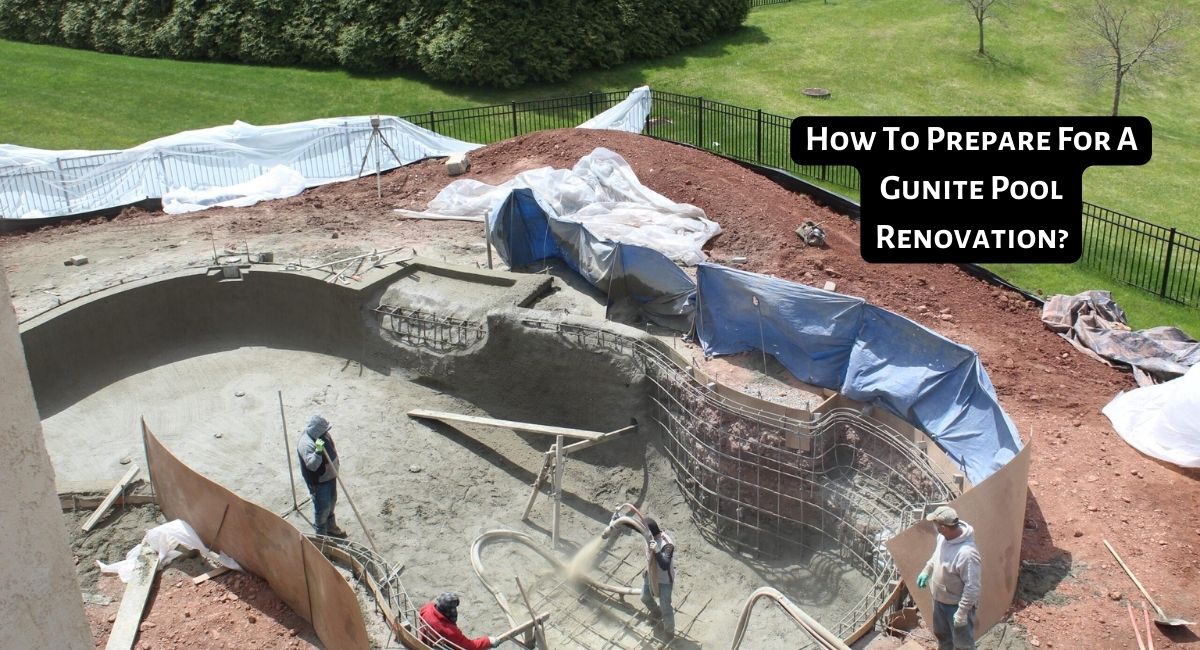When considering the construction of a new swimming pool, one of the important questions to ask is: “How deep can a gunite pool be?” Gunite pools, known for their durability and customizable design, have gained immense popularity among homeowners and commercial establishments.
But what is the maximum depth that can be achieved with gunite?
This article aims to explore the various factors that influence the depth of a gunite pool and shed light on the limits and possibilities of creating a truly deep gunite pool.
Whether you have dreams of a diving pool or simply want to maximize the depth for recreational purposes, understanding the potential depth of a gunite pool can help you make informed decisions during the pool construction process.
Table of Contents
Factors Affecting Gunite Pool Depth
Gunite pools, also known as shotcrete pools, are made of a mixture of sand, water, and cement that is applied in layers using a specialized spray gun. The depth of a gunite pool is a critical factor that affects various aspects of the pool, including safety, functionality, and overall aesthetics. Here are some of the factors that can affect the depth of a gunite pool:
- Purpose: The primary use of the pool is one of the essential factors to consider when determining the depth of a gunite pool. For instance, if the pool is intended for diving, it needs to be deeper than if it is intended for recreational swimming. Typically, a pool designed for diving should have a minimum depth of 8 feet in the deep end to ensure safe diving.
- Landscape: The surrounding landscape can also affect the depth of a gunite pool. If the landscape is complex and experiences strong external forces, such as earthquakes, the pool’s thickness must be increased to ensure its stability.
- Size: The size of the pool also plays a significant role in determining its depth. The larger the pool, the deeper it needs to be to maintain proper water circulation and ensure adequate filtration.
- Design: The shape and design of a pool can also influence its depth. For example, a freeform pool with a depth range of 3 to 8 feet will hold about 15,000 gallons of water, but reducing the depth to a maximum of 5 feet will lower the pool’s overall water volume and affect its aesthetics.
- Water features: The addition of water features, such as waterfalls or fountains, can also affect the depth of a gunite pool. Some water features require specific water depths to function properly and create the desired visual effect.
- Local Regulations: In some areas, local regulations also determine the pool’s depth. For instance, some states require a minimum depth for diving pools because of safety concerns. You should always check with your local authorities to find out if there are any regulations that you need to be aware of before building your pool.
- Budget: The depth of your pool also depends on your budget. The deeper the pool, the more time and money it will take to build. Shallow pools, on the other hand, are relatively easy to construct and are generally less expensive. However, it’s essential to weigh the costs and benefits of different pool depths and choose one that suits your budget and satisfies your needs.
How Deep Can a Gunite Pool Be
Gunite pools are one of the most popular and sought-after swimming pool types on the market. They offer a durable, long-lasting option with an attractive finish that can be customized to suit any outdoor space. But how deep can a Gunite pool actually be?
The answer to How Deep Can a Gunite Pool Be is that it really depends on your specific situation, as there are a number of factors to consider. This article will explore the various influences that affect the maximum depth your Gunite pool can reach, including soil conditions and local regulations. We’ll also discuss how to decide on the ideal depth for your particular pool project.
How Deep Are Inground Pools Generally
Inground pools can be anywhere from 3 feet deep to 9 feet deep. The average inground pool is about 5.5 feet deep. Gunite pools are no different and it is possible for them to be as shallow or as deep as the owner likes; however, deeper pools require more planning and consideration when it comes to design and safety.
In order to safely have a deep gunite pool, the design should include steps or other features that make it easier for swimmers to get in and out of the pool. Properly installed skimmers, returns, drains and pumps are also necessary components for deeper pools since they aid in water circulation which is essential for keeping the pool clean and safe for swimming.
Another important factor to consider is the strength of the gunite material used for constructing the pool. Gunite pools come in different strengths depending on their intended purpose, so it is important to choose a pool that can withstand deeper depths. This will ensure that your pool lasts longer while also providing maximum safety and enjoyment for swimmers.
Finally, it is important to keep in mind that deeper pools will require more energy and resources to maintain. Proper circulation of water is essential in a deep pool and this can be costly if not done correctly. Additionally, chemicals may need to be added more frequently in order to keep the pool clean and healthy for swimmers.
What Depth Would be Perfect for Your Gunite Pool
When considering the depth of a gunite pool, you’ll want to weigh your needs and preferences. Do you plan on using the pool for swimming laps or just lounging around? Do you have small children who will be in the pool? A few feet difference can make a big impact.
If you’re looking to swim laps, then a deeper pool is definitely the way to go. The extra depth will allow you to get in some serious exercise while still providing enough room to move around easily. Generally speaking, an 8-foot deep gunite pool is recommended for lap swimming.
Shallow pools are also great options if you have young children who will be using the pool. A 4-foot depth provides enough water to cool off and splash around in, while keeping you close enough to keep an eye on them.
If you want a medium between these two options, then 6 feet is probably your best bet. This depth allows for some recreational swimming, but also provides more room than a shallow pool would.
The ideal depth for your gunite pool depends on your goals and needs. Consider all of the information above when deciding what will work best for you! With the right depth, you can get plenty of use out of your new inground swimming pool.
Standard depths for different areas of the pool
Different areas of the pool, such as the shallow end, deep end, and Baja shelf, require specific depths for optimal use and safety. Here are some factors affecting the standard depths for different areas of the pool based on the search results:
- Shallow End: The standard depth of the shallow end of a pool is usually around 3-4 feet, although it can vary depending on the design of the pool and the intended use. A pool with shallow both ends and deeper middle can also be an alternative option.
- Deep End: The average depth for the deep end of a residential inground pool is 8 feet. However, if you plan to install a diving board, the diving end of the pool usually needs a 10-foot depth. Pools that are designed with diving boards also need to be bigger than a pool without one, as it accounts for the space the diving board takes up and the depth. If you increase depth for the deep end while keeping the shallow area the same, you may need to increase the length of your pool to accommodate the slope.
- Baja Shelf: A Baja shelf, also known as a tanning ledge or sun shelf, is a shallow ledge in the pool where you can sit and soak up the sun. The perfect tanning ledge depth is between 9 and 12 inches, and a Baja shelf of a typical size will cost somewhere between $1,000 – $1,500. The major exception to the practice of using a slope to change depths is a sun shelf. This is a very shallow shelf at the entrance of your pool that immediately drops into a deeper section of the pool.
- Diving area: For platform diving, the water depth must be at least 3.7m for a 5-meter platform, 4.1m for a 7.5-meter platform, and 4.5m for a 10-meter platform. The water must be at least 3.6m, 4m, and 4.25m deep from the front and sides of the plummet. Similarly, for a one-meter springboard, the water depth must be 11.5 feet at a point directly underneath the tip of the diving board. For a three-meter springboard or five-meter platform, the water depth must be 12.5 feet (4 meters) deep, and 16 feet (5 meters) deep for a 10-meter platform.
- Lap swimming area: The recommended depth for a lap swimming area is between 4 and 6 feet, which is ideal for relaxing, light swimming, and lap swimming. If you want to use the lap pool for recreational sports like basketball, the depth should be around 3.5 to 4 feet. This allows the player to move with ease, stand as well as swim effectively.
- Lounging/cooling off area: the recommended depth for a lounging/cooling off area in a swimming pool is between 3.5 and 4 feet with the water level at waist-height. This depth should be uniform throughout the entire area so that all users can enjoy it equally.
- Multi-purpose pool: If you’re looking for a pool that will accommodate all kinds of activities, then it’s best to opt for an average depth of 5-6 feet. This allows swimmers to splash around and enjoy shallow activities while also providing enough depth for those who want to take a deeper dip.
Do Deeper Gunite Pools Cost More
When considering the cost of a gunite pool it is important to remember that deeper pools will likely require more material and may take longer to install properly. As a result, these pools usually cost more. Additionally, depending on the local building code requirements for your area, there may be additional costs or permits needed when constructing a pool with greater depths.
It is important to get quotes from multiple pool installation companies so that you can compare the costs of different depths and determine which option is best for your budget and needs. As a general rule, the cost of building a deeper gunite pool will be higher due to the extra work involved in constructing it. However, this additional cost may be worth it if a deeper pool is desired.
When deciding on the depth of your gunite pool, make sure to consider factors like budget, size of the space available, and any local building codes that may influence your decision. By taking all these factors into consideration and doing research beforehand, you will be better prepared to make an informed and cost-effective decision.
In short, deeper gunite pools will typically cost more due to the additional material and labor required for construction. However, you may determine that this extra cost is worth it if a deeper pool is desired. Be sure to do your research and compare quotes from multiple pool installation companies before making a decision!
What About Safety Concerns
When considering how deep a gunite pool should be, it is important to consider the safety concerns inherent in deeper pools. A deeper pool can present an increased risk of drowning, particularly for children and inexperienced swimmers.
For this reason, many jurisdictions have regulations about the maximum depth allowed for residential swimming pools. It is important to check with local codes and regulations to ensure that the desired depth of a gunite pool does not exceed legal limits.
In addition, safety features such as fences, gates, and alarms can be used to increase the security of a deeper gunite pool. Ensuring that all these precautions are in place will help reduce the risk of accidents or drownings associated with deeper pools.
Finally, it is important to ensure that the pool has enough lighting at night to ensure swimmers can see where they are going in the pool. While many people may prefer the aesthetic of a darker pool, safety should always be the top priority when constructing any swimming pool.
What is the Recommended Depth for a Family Pool
When considering the depth of a gunite pool, safety should be a top priority. For family pools, it is generally recommended that the shallow end not exceed four feet in depth and the deep end no more than eight feet. This allows for adequate swimming space without causing undue risk to swimmers, particularly young children or inexperienced swimmers.
Of course, the depth of a pool may be customized to fit specific needs. For example, if there will be frequent diving into the deep end, greater depths up to 10 feet may be considered. Additionally, lap pools typically have uniform depths between five and seven feet.
No matter what depth you choose for your gunite pool, it is important to place safety features such as ladders and handrails in key locations. This ensures that all swimmers can safely enter and exit the pool, even if they cannot comfortably reach the bottom. It is also recommended to install additional safety features such as pool alarms, secure fencing, and non-slip surfaces around the deck area.
Problems that can arise from incorrect depth
Incorrect pool depth can cause several problems. Firstly, reducing the depth of a pool reduces the volume of water it holds, which can affect its usability for activities such as diving. Secondly, if the pool is dug to the wrong depth, it can be challenging to fix the problem once the plaster is installed and there’s water in the pool.
It can also cause issues during construction, especially if the pool’s deep end is not over-dug by two feet or if there are rocks and surface roots that need removal.
Furthermore, an incorrect pool depth can cause safety concerns. For instance, the deep end of a pool must be at least 8 feet for safety reasons if you plan to dive into it. A pool with incorrect depth can also lead to uneven water levels, causing damage to the pool walls and liners.
Moreover, pool owners may face water chemistry issues with incorrect pool depth. For example, a smaller pool with reduced depth will require less chlorine to maintain a balanced level of pH. An imbalance of pH levels in a pool can cause corrosion of metals and equipment, such as pool heaters. Additionally, improper pool depth can lead to the formation of calcium build-up on pool walls, which can cause white flaky scales to appear in your pool.
An incorrect pool depth can also lead to structural damage over time. Pools that are too deep or too shallow can lead to cracks or warping of the pool walls and cause leaks, which can be costly to repair. Resolving structural damage may even require a complete overhaul of the pool’s system.
Solutions for correcting pool depth
Getting a pool is a huge investment, and it’s important that it is done right. Unfortunately, there are times when the pool builder accidentally goes too deep or too shallow. This can lead to quite a headache, but it isn’t impossible to fix. In this section, we will go over solutions for correcting a pool that has been dug too deep or too shallow.
Option 1: Demolish and Redo
While this option is the most drastic, it will ensure your pool is done right. Demolishing and redoing the pool ensures a clean slate, allowing the builder to start from scratch. This option is often expensive though, as demolition and redoing a pool involves a lot of work. Additionally, the pool will be unusable for a long period of time due to the demolition and rebuilding process.
Option 2: Placement of Water
If there’s an over-dug pool, the most common solution would be the placement of water beneath the pool liner. This is the cheapest solution, which is why most individuals will immediately consider this. The process includes adding water onto the deep end to allow the pool’s deep and shallow ends to be leveled out. This solution is ideal if the discrepancy is minimal, but for deeper pools, this solution should be avoided.
Option 3: Resurfacing
This can be a solution if the problem with the pool is in the lining. If the lining is too shallow, a new layer of liner can be added. On the other hand, deeper liner problems cannot be fixed through the use of resurfacing. A layer is added to the lining that is designed to enhance the thickness on the shallow end of the pool.
Option 4: Build a Retaining Wall
In cases where the pool has been dug too deep, building a retaining wall is the ideal solution. Retaining walls can be added at the shallow end of the pool to level off the hole. This will require excavating the space needed for the wall and then building the wall in the hole to the desired height.
Option 5: Use of Additional Concretes
Using additional concrete to raise the bottom can be a cheaper solution if the depth is less than 3.5ft. This will require the addition of more concrete to the shallow end of the pool to level it off. This option can only be used for shallow-ending pools since any great discrepancy would require too much concrete, making it no longer a cheaper option.
Conclusion
Gunite pools offer a multitude of advantages, particularly in terms of their flexibility in design and durability. Their ability to be constructed to virtually any depth provides homeowners with endless possibilities for creating their dream pools.
Whether it be a shallow lounging area, a diving well, or a deep lap pool, gunite pools can accommodate it all. Additionally, the reinforced concrete construction ensures longevity, minimizing the need for costly repairs or renovations.
Frequently Asked Questions
1. What is the deepest pool you can build?
The deepest pool you can build is dependent on the quality of materials and the engineering involved in constructing the pool. In general, gunite pools can be built up to 10 feet deep. However, it is important to consult a professional to make sure that your pool is engineered properly and constructed with quality materials that are capable of handling such depths.
2. Can you make an existing gunite pool deeper?
Yes, it is possible to make an existing gunite pool deeper. However, the process can be complex and costly. If the pool has been previously filled with water or has foundation damage, additional work may be needed to strengthen the pool’s structure before deepening it. Additionally, new plumbing systems may need to be installed that can accommodate the increased depth. It’s important to consult with a professional pool contractor and engineer before beginning this project, as some states may require permits or additional safety measures for deeper pools
3. What is the lifespan of a gunite pool?
A gunite pool has an expected lifespan of up to 25 years with proper maintenance. Gunite is a type of concrete made of a mixture of sand, water, and cement that is sprayed onto the walls and bottom of the pool. It can withstand extreme weather conditions, making it an ideal material for pool construction. Proper maintenance such as regular cleaning and water treatment, as well as avoiding contact with sharp objects, will help maintain the longevity of your gunite pool.
4. What is the average size of a gunite pool?
The average size of a gunite pool depends on the specific needs and preferences of the homeowner. Gunite pools can be as small as 8×12 feet or as large as 50×90 feet, although most are between 15-25 feet in width and 30-45 feet in length. The depth can range from 3 to 8 ft deep, allowing for a variety of shapes and sizes. Gunite pools can also be customized with benches, steps, an infinity edge or other features to give the pool a unique look. With all the options available, gunite pools are popular choices for many homeowners.






